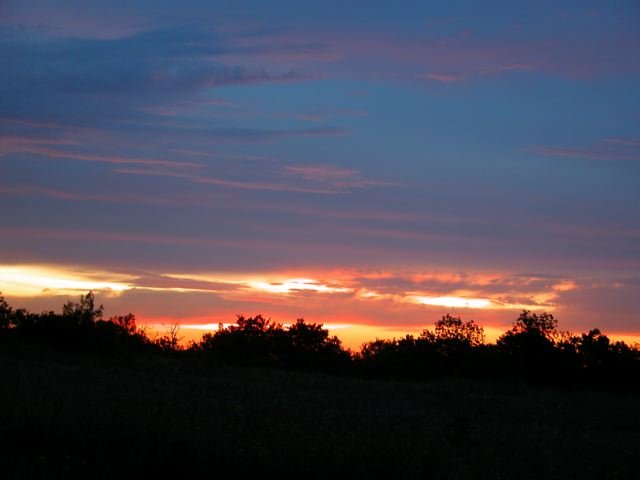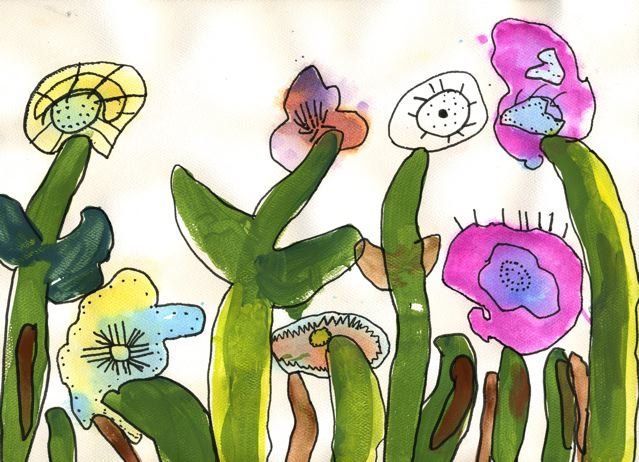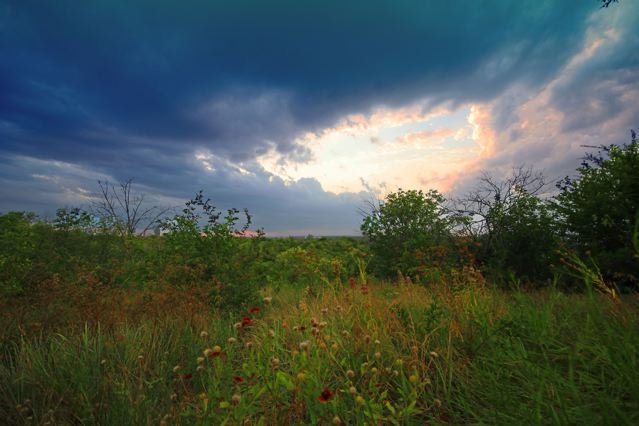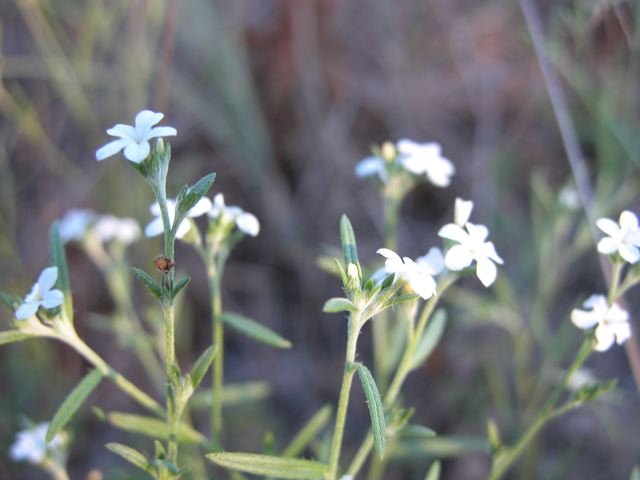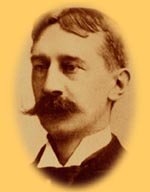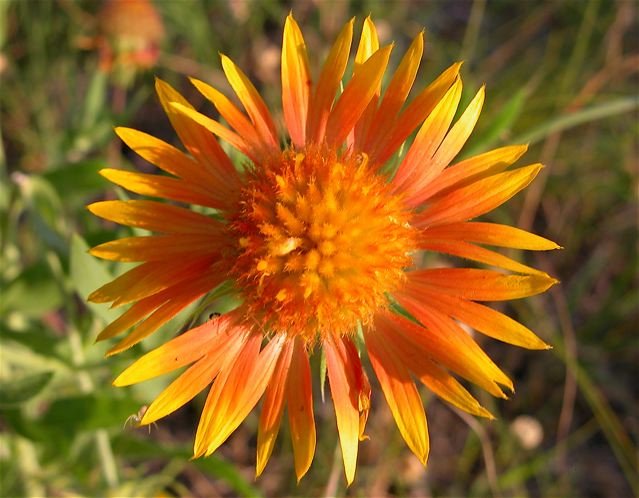Prairie Notes #67: The Digital Prairie
Prairie Notes are monthly photo/journal observations from Tandy Hills Natural Area by Founder/Director, Don Young. They include field reports, flora and fauna sightings, and more, mixed with a scoop of dry humor and a bit of philosophy. They are available free to all who get on the FOTHNA email list.
The Digital Prairie
Prairie Notes #67
July 5, 2012
1) The Digital Prairie
2) Field Report
3) KOP Winners
4) Texas Grasslands
5) Sunsets by Sundog
6) Wildflower of the Moment
7) Prairie Plant Puzzler
8) Chasing a Prairie Tale
9) Prairie Proverb
1) The Digital Prairie
In her recent essay in the New York Times, Diane Ackerman asks the question, "What if...digital nature replaces biological nature?" She also references the idea of "nature deficit disorder" coined by author, Richard Louv, where the phenomena of exaggerated parental fears, restricted access to nature and easy access to alluring digital devices results in a range of behavioral problems in children. Indeed for many children and adults today nature has become a virtual activity rather than literal.
Such a trend is not only bad news for people but even worse for the natural world.
For example: Places like Tandy Hills and other semi-wild parks and nature areas could one day disappear into the swirling miasma of "development" or turned into domesticated parks if enough people don't take advantage of the benefits these natural places offer. (see #4 below) In fact, such a scenario was a real possibility at Tandy Hills about eight years ago as the drilling boom hit Fort Worth. Only the committed efforts of a handful of people prevented disaster.
The benefits of observing wildflowers in their native environment, in situ, for example, are that you can smell them, touch them and sometimes, taste them. You can hear the sound they make shaking in the wind. Replacing biological nature with virtual nature limits our senses and will undoubtedly dull them, eventually.
As a kid growing up is east Fort Worth I was immersed in an all-encompassing nature. The "field" under the sky behind my house was a grassland labyrinth of mystery in Summer, a place to build a tree house or "play Indian" in the Fall, a Tom Sawyer river-rafting dream when it flooded every Spring and a quiet land of reflection in Winter. There was always an element of danger and risk-taking that made it all the more real, something that virtual nature denies us.
When we literally put ourselves in nature we get context, backdrop, sensation, memories, inspiration and yes, danger that can never be replaced by high-def digital screens with animated graphics. In his definitive essay, Freedom & Wilderness, Wilderness & Freedom, the late, Ed Abbey, called the idea of nature preservation as "one of the fruits of civilization like, "...Bach's music, peppermint toothpaste and the secret ballot...". He even went so far as to equate willderness with freedom arguing that, one cannot have freedom without wilderness.
No matter how plugged-in we become, human beings are still wild animals. We need wild places to roam where we can reconnect with our most basic selves "...free from any and all direct administration by their fellow men." (Abbey)
Finally, here's a related and alarming trend to keep in mind: In the recent Texas House runoff between State Rep. Lon Burnam and challenger Carlos Vasquez for District 90, Vasquez publicly admonished Burnam for, "...always talking about environmental issues. He's not talking about any issues that make a difference to constituents." Burnam, known for his stellar environmental record, narrowly won the election by only 159 votes.
Think hard about that while celebrating your freedom and independence on July 4th. I can't think of a better way to celebrate than by reconnecting with the natural world at the wild and beautiful, Tandy Hills Natural Area.
DY
Summer Solstice sunset at Tandy Hills Natural Area
2) Field Report
- The wet early Spring is bye-bye. Hot and dry conditions have ruled the Tandy Hills since mid-April. The normal rainy season didn't happen leaving the regional rainfall total 3 inches below normal as we move into the dry months of Summer. The D-word is being mentioned again, out loud.
- Despite the dryness, Tandy Hills remains an oasis in the central city. There are many hidden corners where seeps flow and wildflowers flourish. Morning or evening visits are recommended.
- Wildflowers currently blooming include, Texas Bluebells, Queen's Delight, Gay Feather, White Prairie Clover, Compassplant, Yellow Basin Sneezeweed and plenty of sturdy, Saw-leaf Daisy.
- Fall-blooming plants such as Eryngo, Maximilian Sunflower and the Fall grasses are looking unusually vigorous for late June. We need them to do better than last year for our first-ever, Fall field-trips for Kids on the Prairie.
3) KOP Winners
In a conscious effort to head off Nature Deficit Disorder, Eastern Hills Elementary School was chosen as the FOTHNA-sponsored scholarship school for the Spring 2012 edition of Kids on the Prairie. FOTHNA paid all expenses to bring the 4th grade students, all 92 of them, to Tandy Hills for an all-day field trip. With few exceptions these young students had never been to a wildscape like Tandy Hills. They embraced the experience with enthusiasm and reflection. We challenged them to show us what they learned with thoughts, words and pictures.
On June 1, the last day of school, KOP Director, Anne Aldefer, along with Don Young and Debora Young announced the winners of the Tandy Hills Essay-Poetry-Art contest. Prizes were awarded to the excited 4th grade classes. Please follow this link to see and read the winning entries.
Eastern Hills Elementary School, KOP Art winner - Arie Boston
4) Texas Grasslands
Most of you already know that 99% of the original 20 million acres of Texas prairie is gone. Gone to the plow, the shopping center, the housing development and the mad search for fossil fuel. The remaining acreage is threatened by the same suspects.
Thank goodness for the Native Prairies Association of Texas and their ongoing efforts to save and restore native prairies. The latest effort is a one-day workshop on July 13 titled, Tools & Resources for Managing & Conserving Texas Grasslands.
Read all about this and other upcoming NPAT events HERE:
5) Sunsets by Sundog
Even though we often travel the same paths at Tandy Hills, I have never met photographer, Chris Emory. He is making quite a name for himself with the striking photographs he takes of sunsets (among other things) at Tandy Hills. The painterly compositions he creates are exquisite. The colors he captures are rich and inspiring. His website is forthcoming but please check out his Facebook page here:
Glory, by Chris Emory (taken at THNA)
6) Wildflower of the Moment
White Heliotrope (Heliotropium tenellum) is one of those tiny, low growing wildflowers that is just now getting my full attention. It takes a lot of them together in one place to really notice them and they are very robust this year. Also known as Pasture Heliotrope, they are naturally occurring on the limestone outcrops at Tandy Hills. The tiny, five-petaled white flowers are about 1/4" diameter with light yellow centers. The foliage is delicately sparse making the plant easy to overlook.
The name Heliotrope is from ancient Greek: helios, the Sun, and trope, a turn; ancient writers believed the flowers turned toward the Sun; or because some species flower at Summer Solstice. (Shinners & Mahlers)
7) Prairie Plant Puzzler
The Puzzler is on vacation this month.
➤ Stumped by the June Puzzler? Answer: Wand Milkweed (Asclepias viridiflora)
8) Chasing a Prairie Tale
The June 22 edition of the New York Times Travel section had a story about a very interesting New Yorker named, George Bird Grinnell. In August 1872, "in order to experience first hand the most romantic image of the western frontier..." Grinell joined the Pawnee Nation of Plains Indians on their last big summer buffalo hunt through the prairies. (As a grad student, he accompanied George Armstrong Custer's 1874 Black Hills expedition as a naturalist but declined an offer for the Little Big Horn expedition in 1876.)
In his fascinating travel report, Times writer, Tony Perrottet, retraces Grinnells trip to Kansas and Nebraska including stops at The Tallgrass Prairie National Preserve. Mostly forgotten today, Grinnell who died in 1938, was described in his NYT obit as "the father of American conservation." This fascinating story whet your appetite to learn more about GB Grinnell and for a road trip or, at least, a mental vacation to the Great Plains.
George Bird Grinnell
9) Prairie Proverb
"To see a world in a grain of sand
And a heaven in a wildflower
Hold infinity in the palm of your hand
And eternity in an hour"
- William Blake (from Auguries of Innocence, 1803)
Indian Blanket found at THNA in uncommon yellow/orange shadings.
All photographs by Don Young except where otherwise noted.
Don Young



